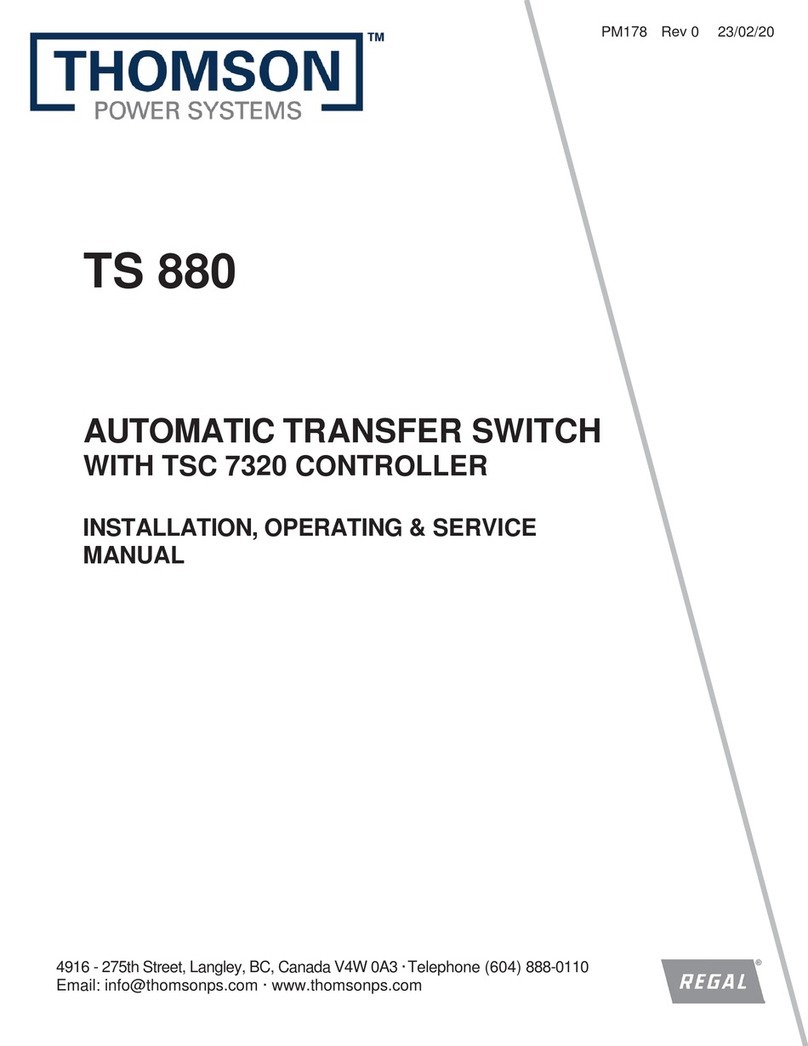
TS 870 Transfer Switch
PM175 REV 0 23/02/10 7 Thomson Power Systems
3.10. WITHSTAND/INTERRUPTING CURRENT RATINGS:
Refer to electrical ratings shown in SECTION 13 for withstand/Interrupting current ratings.
Short circuit currents listed for Standard type ATS are Withstand ratings. Short circuit currents
listed for Service Entrance type ATS are Interrupting ratings based on the ratings of the
supplied utility service disconnect circuit breaker utilized.
3.11. TRANSFER SWITCHES WITH INTEGRAL OVER CURRENT PROTECTION
For models of transfer switch with integral over current protection, the over current protection
must be set prior to operation. The equipment will be shipped from the factory with a long-time
current setting of 100% (of the equipment rating) and maximum short-time/instantaneous
current and time delay settings.
WARNING
Do Not Energize this equipment until
device settings have been verified to
ensure proper system protection &
coordination. Failure to do so may
result in equipment failure.
Refer to SECTION 5.3.2 of this manual for additional information on operation of the Transfer
switch following an over current trip condition. Refer to information supplied with the transfer
switch documentation package for adjustment procedures on the power switching units over
current protection trip unit. Contact the factory if any additional information is required.
3.12. TRANSFER SWITCHES WITH MULTI-TAP VOLTAGE CAPABILITY
If the transfer switch has programmable multi-tap voltage capability (i.e. ATS Model Code with
Voltage Code “Y”), confirm the transfer switch has been configured for the correct system
voltage prior to installation.
WARNING
Failure to confirm and match transfer
switch voltage with the system voltage
could cause serious equipment damage.
The voltage selections and connections are shown on the drawings supplied with each transfer
switch. The factory default settings will be indicated on the calibration label attached on the
inside of the enclosure door (supplied loose on open style models). A blank label is included
to record the applicable settings if the configuration is changed from the factory default settings.
To change the transfer switch voltage, refer to TS 870 System Voltage Change Procedure,
Appendix B. Contact Thomson Power Systems for further information as may be required.




























